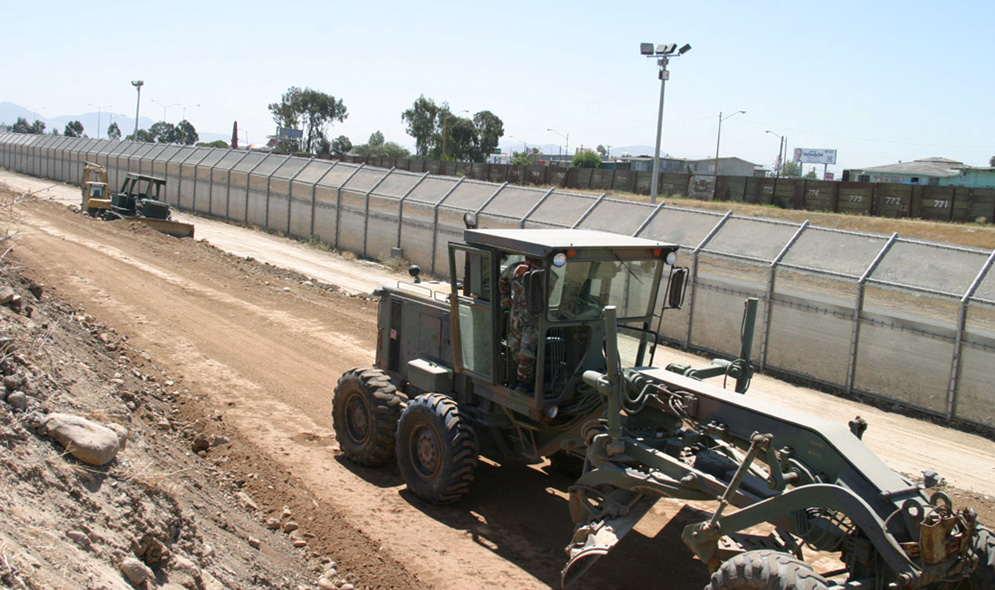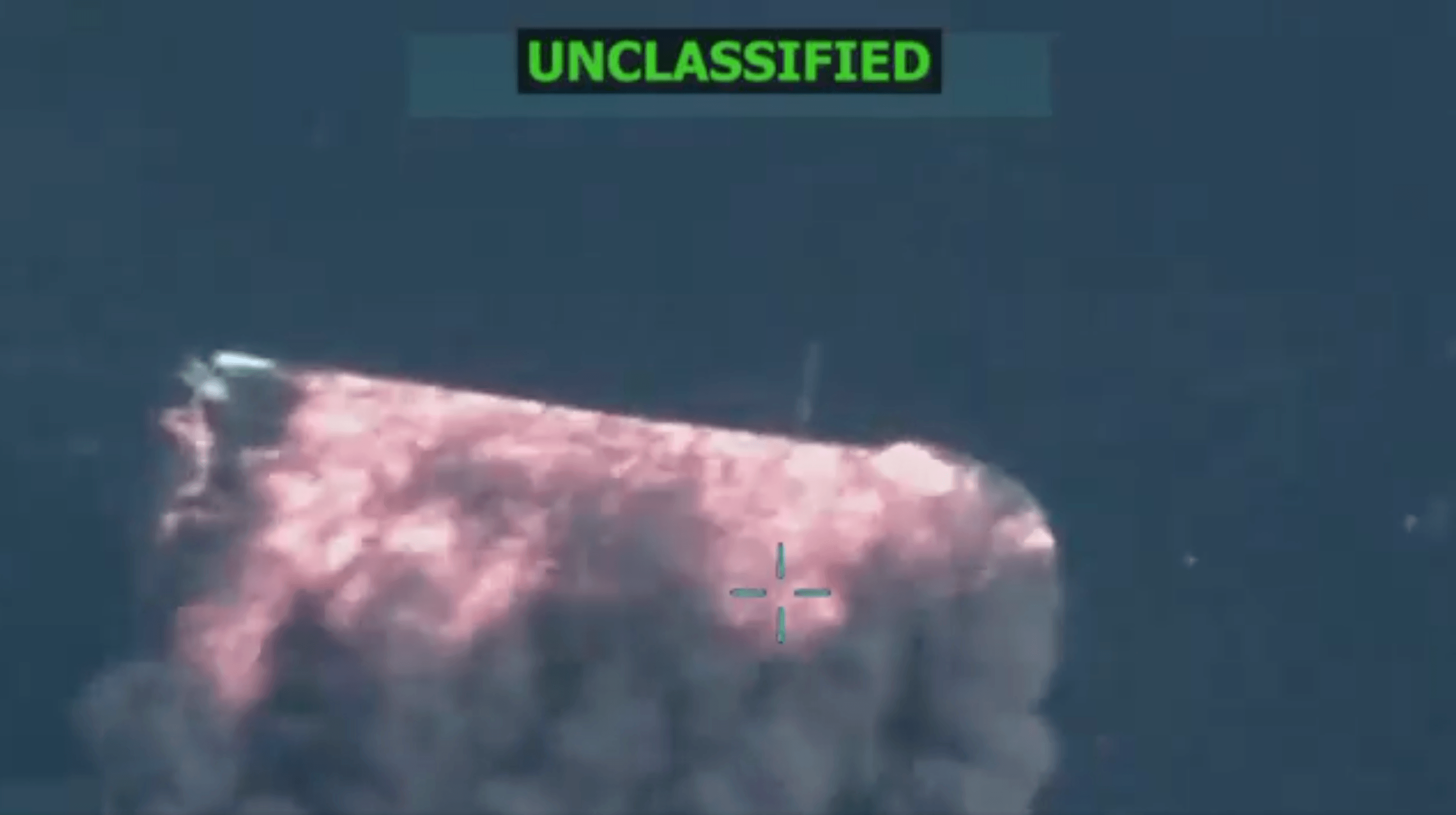Declaring an Emergency to Build a Border Wall: The Statutory Arguments
The president’s statutory authorities regarding a proposed wall at the southern border are more generous than they might initially seem.

Published by The Lawfare Institute
in Cooperation With

As the government shutdown drags on, President Trump has made multiple statements hinting that, if Congress refuses to appropriate $5.6 billion in new appropriations to fund a wall along the southern border, he will declare a national emergency in order to access existing Pentagon funds for the effort. On Dec. 18, Trump tweeted, “Because of the tremendous dangers at the Border, including large scale criminal and drug inflow, the United States Military will build the Wall!” On Jan. 4, the president acknowledged the possibility of using emergency powers to fund the wall, saying, “We can call a national emergency because of the security of our country … I haven't done it. I may do it … We can call a national emergency and build it very quickly.” On Jan. 6, he told reporters, “I may declare a national emergency dependent on what's going to happen over the next few days." This may not be idle talk: according to Reuters, Vice President Mike Pence has said that the White House counsel’s office is examining the legality of declaring such an emergency in order to construct a wall.
Building a wall was one of the central promises of Trump’s 2016 presidential campaign. The Trump administration initially requested that Congress appropriate $25 billion for the project after Mexico refused to pay for it, as Trump had promised on the campaign trail, but Congress specifically denied the funds in 2017 and 2018. After Congress passed a number of stopgap measures to continue funding the government while talks continued on money for the wall, on Dec. 22 Trump refused to sign another temporary measure, which caused the government to shut down.
In short, the president is looking for a way to end the government shutdown while keeping his campaign promise to build the wall. But in the absence of an appropriate statutory authority on which to rely to build the wall, such action would be unconstitutional: Article I, Section 1 of the Constitution assigns the role of making laws to Congress, and Article I, Section 9 specifies that “[n]o Money shall be drawn from the Treasury, but in Consequence of Appropriations made by Law.” The question, therefore, is what existing statutory authorities the president could reasonably rely on to use already-appropriated funds to build the wall.
Construction Authority
With the caveat that it remains unclear precisely what legal authority or authorities Trump has in mind, it is possible to make some educated guesses about what administration lawyers may be considering.
The first question is what legal authorities might actually be available for the purpose of using already-appropriated funding to build a wall on the U.S.-Mexico border. Congressional oversight of military construction programs is extensive, and as a general matter, all military construction projects must first be authorized by Congress. The General Accounting Office (GAO) in B-213137, 63 Comp. Gen. 422, 433 (1984) interpreted 41 U.S.C. § 12 to require specific congressional authorization for military construction projects and to prohibit the use of other, more general appropriations for such projects. Congress typically authorizes military construction projects in the annual Military Construction Authorization Act, with project authorizations broken down individually in the accompanying conference report. As such, the large general-purpose pot of Pentagon funding known as Operation & Maintenance (O&M) funding generally cannot be used for construction purposes.
But the Defense Department’s emergency military construction authorities contain two exceptions to this requirement of congressional authorization. The first, outlined in 10 U.S.C. § 2803, allows up to $50 million of appropriated funds for military construction to be spent on not-specifically-authorized construction projects if those projects are for the purpose of national security and protecting the safety of U.S. troops. According to Defense Department guidance from 2013, the relevant legislative history indicates that this authority may not be used for projects denied authorization in previous Military Construction Appropriations Acts—and unfortunately for the administration, the wall fits this description. In any event, the $50 million authorized under § 2803 would be a drop in the bucket of the $5.6 billion Trump is currently requesting and would fall well short of the estimated cost for the wall, which is likely somewhere between $12 billion and $25 billion.
The second exception, outlined in 10 U.S. Code § 2808(a),provides that:
“[i]n the event of a declaration of war or the declaration by the President of a national emergency in accordance with the National Emergencies Act (50 U.S.C. 1601 et seq.) that requires use of the armed forces, the Secretary of Defense, without regard to any other provision of law, may undertake military construction projects, and may authorize the Secretaries of the military departments to undertake military construction projects, not otherwise authorized by law that are necessary to support such use of the armed forces. Such projects may be undertaken only within the total amount of funds that have been appropriated for military construction, including funds appropriated for family housing, that have not been obligated.” (Emphasis added.)
If such a national emergency is declared, the secretary of defense must notify the appropriate congressional committees and provide an “estimated cost of the construction projects, including the cost of any real estate action pertaining to those construction projects.” The authority terminates “with respect to any war or national emergency at the end of the war or national emergency.”
The portion of this law that references a “declaration of war” can be quickly dispensed with. There is no authority for the president to declare war: that power is expressly reserved to the Congress in Article I, Section 8 of the Constitution. Therefore, Trump could only invoke this authority by declaring a national emergency, consistent with Trump’s recent statements. Presidents have invoked § 2808 by declaring national emergency at least twice: in 1990 in Executive Order 12734 in response to Iraq’s invasion of Kuwait, and in 2001 in Executive Order 13235, following the terrorist attack of Sept. 11, 2001.
Under a plain reading of this language, it would seem the authority to engage in military construction projects would only apply to national emergencies that require use of the armed forces—and construction done pursuant to the authority would also need to be related to that specific use of the armed forces. In other words, the ongoing conflict in the Democratic Republic of the Congo, for example, could not serve as the basis for a national emergency that would authorize building the wall on the border with Mexico. The president also likely couldn’t declare a national emergency with respect to the Mexican border and then construct something that would not in any way support the mission of the U.S. armed forces in responding to the supposed emergency.
It is not obvious that the current situation at the U.S.-Mexico border requires the presence of the military. According to a report by Customs and Border Protection (CBP), CBP apprehensions along the southwest border plummeted by approximately 80 percent from Fiscal Year 2000 to FY 2017, from a high of over 1.6 million to around 300,000. Though numbers rose slightly in FY 2018, the administration has not presented evidence that CBP officials require military assistance to prevent immigrants from entering the country.
Nonetheless, in November 2018, a White House memo reportedly “authorized a more forward-leaning role for the active-duty forces, permitting troops to work alongside Border Patrol agents in duties such as crowd control and temporary detention.” Trump’s deployment of troops to the border in October was widely criticized as an election-year ploy, but it also may have had the effect of laying the groundwork for a national emergency determination that would allow Trump to build the wall using existing military construction funds pursuant to 10 U.S.C. § 2808(a). That is, because troops are currently stationed at the border, there is a better case that an emergency related to the border would require the use of the armed forces under § 2808(a).
But what would the basis of the emergency be? The government might point to an alleged crisis in border enforcement generally, though as noted, publicly available data does not indicate such a crisis. Recent statements by administration officials suggest that the government may also seek to make a more specific argument about terrorism. Various administration officials, including Secretary of State Mike Pompeo, Secretary of Homeland Security Kirstjen Nielsen and White House Press Secretary Sarah Huckabee Sanders, have publicly made the link between terrorism and what is happening at the southern border. On Jan. 6, for example, Sanders said in an interview that “nearly 4,000 known or suspected terrorists come into our country illegally [in FY 2018]. And we know that our most vulnerable point of entry is at our southern border.” (Though the source of Sanders’s information is unclear, NBC has since reported that CBP stopped only six individuals listed as known or suspected terrorists from crossing the U.S.-Mexico border in the first half of FY 2018.)
If the president finds that the situation at the border “requires the use of the armed forces,” the next question is whether construction of a wall could be construed as “necessary to support such use of the armed forces.” This, in turn, raises the issue of what U.S. troops are actually doing and responding to at the border. The New York Times has reported that the approximately 5,900 American troops on the border are spread between southwestern Texas and southern California in small bases, where they have helped set up concertina wire and other security barriers. USA Today reported on Jan. 4 that the Department of Homeland Security requested from the Department of Defense more support from active-duty military troops to bolster CBP officers along the southern border, in particular more combat engineers to install concertina wire and more aircraft and crews to transport CBP officers. One can imagine the administration making an argument that the troops need the wall for their mission to keep terrorists and/or civilian invaders out of the United States, and the concertina wire they are laying is not sufficient for them to respond effectively. How convincing one finds this argument is a different question.
Declaring Emergency
Beyond the limitations outlined in § 2808(a), the statute does not provide any explicit criteria or guidance for the president regarding what type of circumstances would qualify as a “national emergency” for purposes of this construction authority. Both the courts and Congress have typically been deferential to presidential declarations of national emergencies. For example, in the context of economic sanctions under the International Emergency Economic Powers Act (IEEPA)—which was enacted in part to limit the president’s ability to declare unending national emergencies—courts have generally deferred to the executive’s decisions regarding whether a particular foreign policy issue creates a national emergency sufficient to invoke IEEPA’s authorities, along with the underlying factual determinations by the executive branch.
If the administration were to tie the need for a wall to the threat of terrorism, it might seek to piggyback on the national emergency already declared in Executive Order 13224 by President George W. Bush, which authorized the use of economic sanctions to address terrorism and threats of terrorism committed by foreign terrorists against U.S. nationals or the United States. An executive order by Trump to extend that national emergency declaration to cover construction pursuant to 10 U.S.C. § 2808 would look very similar to the two prior executive orders in which § 2808 was invoked: these orders rested on national emergencies that had already been declared.
§ 2808(a)’s reference the National Emergencies Act (50 U.S.C. 1601 et seq.), which was enacted in 1976 as a way to rein in the proliferation of emergency powers, provides the affirmative authorization to the president to issue a national emergency declaration. But it also provides a process-oriented framework for congressional involvement in the event the president declares such a national emergency. Under the National Emergencies Act, any such declaration of a national emergency must “immediately be transmitted to the Congress and published in the Federal Register.” A national emergency covered by these provisions terminates if either a joint resolution is enacted or the president issues a proclamation terminating the emergency. Such a joint resolution terminating the emergency would enjoy expedited consideration in Congress but would still need either the signature of the president or enough votes to override a presidential veto. The statute states that every six months “each House of Congress shall meet to consider a vote on a joint resolution to determine whether that emergency shall be terminated.”
This language, however, is not legally binding on Congress. And as Elizabeth Goitein points out, the law has neither stemmed the declaration of national emergencies nor encouraged declarations that the national emergency is over.
It is worth noting that under these provisions, even a valid termination of the national emergency by the president or via a joint resolution would not affect “(A) any action taken or proceeding pending not finally concluded or determined on such date; (B) any action or proceeding based on any act committed prior to such date; or (C) any rights or duties that matured or penalties that were incurred prior to such date.” This raises the question of whether these sections would allow the project to go forward if, for example, the administration were to sign a contract obligating the funds to build the wall before Congress terminated the national emergency.
Other Possibilities
Several other legal authorities are worth mentioning in the event the Trump administration decides to invoke them in connection with a national emergency declaration.
Over the years, myriad national emergency authorities have been given to the president through legislation, and the Brennan Center for Justice usefully categorized them last month. These authorities authorize a panoply of types of activities—related to things like public health, federal personnel, and criminal prosecution and detainment—that would not by their terms authorize construction of a wall. In my review, only about few would seem close to being on-point for the purpose of constructing Trump’s proposed wall:
- Under 33 U.S.C. § 2293, the secretary of the Army may terminate or defer any Army civil works project and apply the resources, including funds, personnel, and equipment, of the Army’s civil works program to authorized civil works, military construction, and civil defense projects that are essential to the national defense, without regard to any other provision of law "in the event of a declaration of war or a declaration by the President of a national emergency in accordance with the National Emergencies Act [50 U.S.C. §§ 1601 et seq.] that requires or may require use of the Armed Forces.”
- Under 50 U.S.C. § 98f (a)(2), any officer or employee of the United States designated by the president may order the release of materials in the strategic raw materials stockpile for use, sale, or other disposition, if the officer or employee determines that the release is required for purposes of the national defense during a national emergency.
- Under 40 U.S.C. § 905, procedures for providing notice to local government and prospective purchasers before purchase or sale of real property in urban areas by an administrator of general services may be waived during a period of national emergency proclaimed by the president.
- Under 7 U.S.C. § 4208, legal provisions intended to protect farmland do not apply to the acquisition or use of farmland for national defense purposes during a national emergency.
- Under 42 U.S.C. § 4625 (c)(3)(B), a provision that persons displaced by a federal project may not be required to leave their dwelling unless they have had a reasonable opportunity to relocate to a comparable replacement dwelling does not apply in the case of a national emergency declared by the president.
- Under 10 U.S.C. § 2662 (f), the secretary of the military department concerned, or the secretary of defense with respect to Department of Defense transactions, may waive advance reporting requirements for real property transactions "if the Secretary concerned determines that the transaction is made as a result of … a declaration of a national emergency by the President pursuant to the National Emergencies Act (50 U.S.C. §§ 1601 et seq.).
Another statutory authority that could potentially be used to support construction of the wall, and which would not require the declaration of a national emergency, is 10 U.S.C. § Section 284, which authorizes the secretary of defense to “provide support for the counterdrug activities or activities to counter transnational organized crime of any other department or agency of the Federal Government or of any State, local, tribal, or foreign law enforcement agency” for the purposes set forth in the section if requested by another Federal agency or State, local, or tribal governments in support of law enforcement efforts. Those purposes include, among other things, “[c]onstruction of roads and fences and installation of lighting to block drug smuggling corridors across international boundaries of the United States,” as well as the “[t]he establishment (including an unspecified minor military construction project) and operation of bases of operations or training facilities for the purpose of facilitating counterdrug activities or activities to counter transnational organized crime of the Department of Defense or any Federal, State, local, or tribal law enforcement agency within or outside the United States” (emphasis added).
The wall would almost certainly not qualify as an “unspecified minor military construction project,” because the cost is too high. But if the Trump administration decided the wall was really a “fence,” it might be well on its way to making the argument that the administration may send Pentagon funds to the Department of Homeland Security or another agency to build a wall.
Conclusion
At first glance, the president’s proposal to build a wall as a matter of national emergency in the face of a government shutdown over the refusal by Congress to provide funds for such a wall seems like an end-run around Congress’s constitutional prerogatives to make laws and appropriate funds. But on closer inspection, the potentially relevant statutes delegate substantial authority to the president, and it is possible to imagine arguments that members of Congress, or the courts, could find convincing if they are predisposed to defer to the president on questions of what constitutes a national emergency at the border. The responses to such an action by the president will be both political and legal. It remains to be seen whether actions and statements by the president and other administration officials that are not readily supported by facts and data can overcome more basic constitutional concerns that the president is abusing his power at the expense of the legislative branch.





